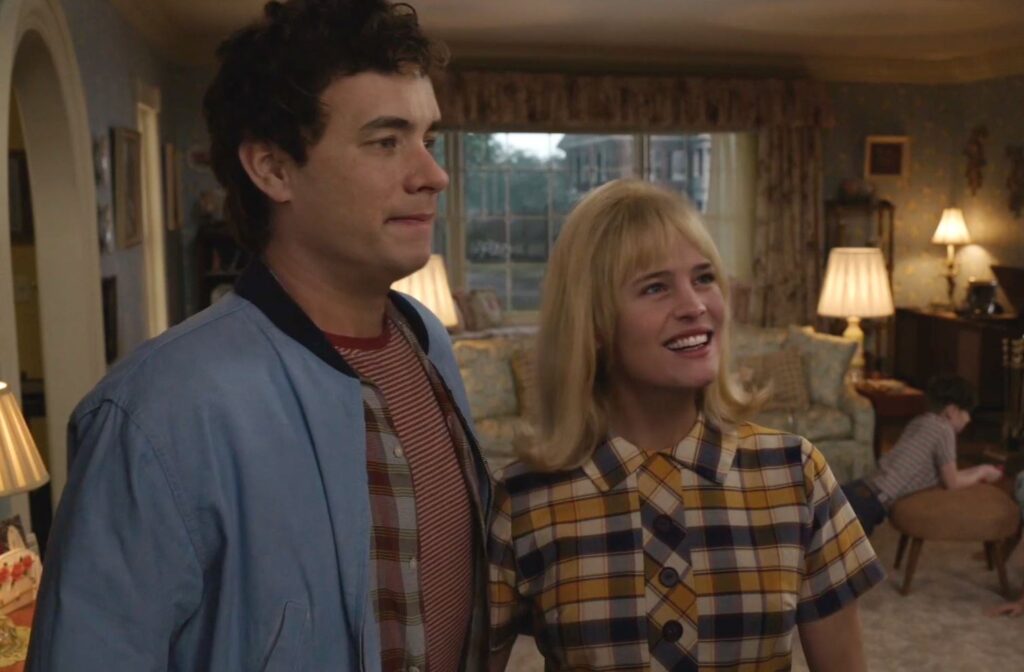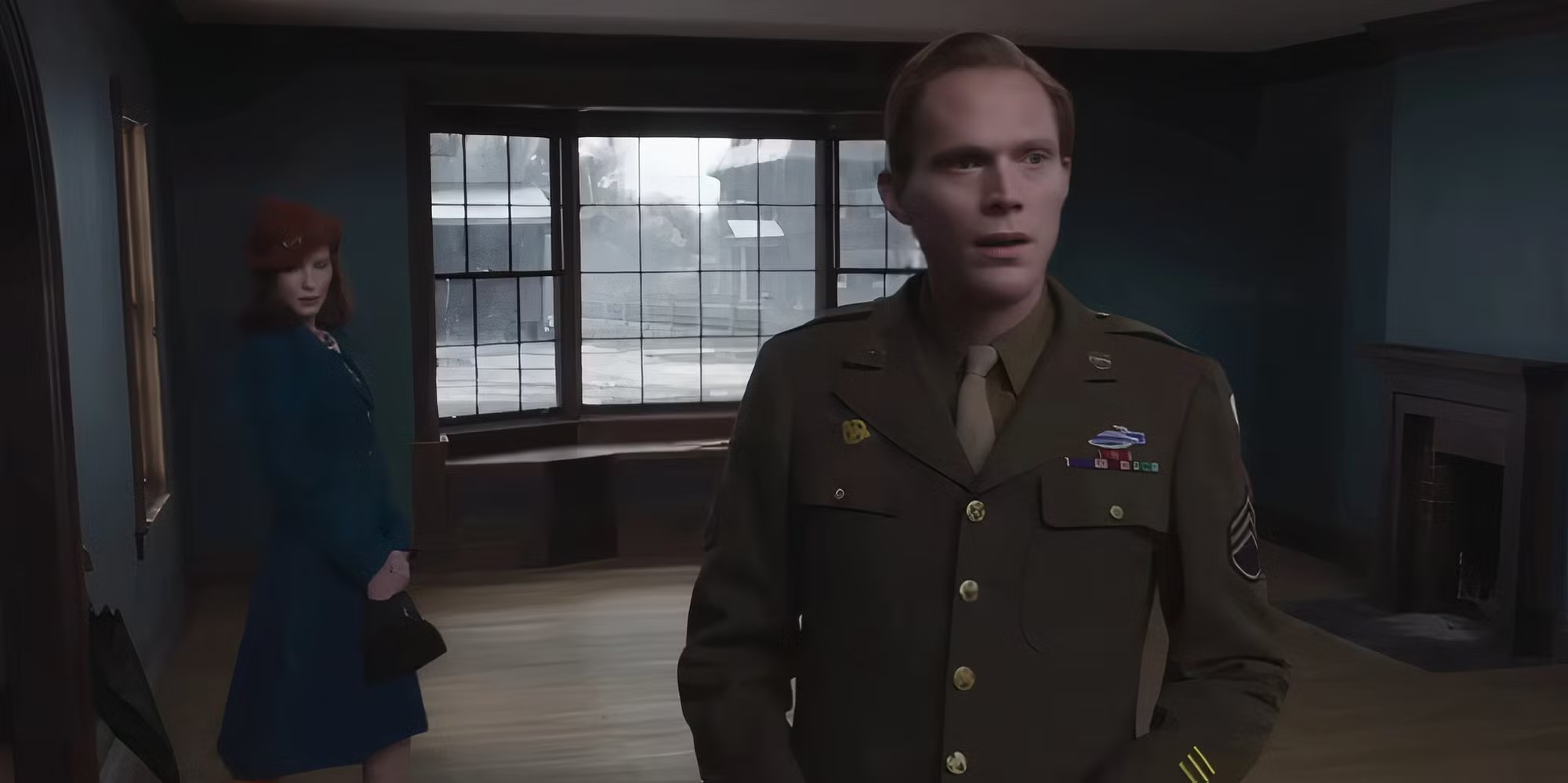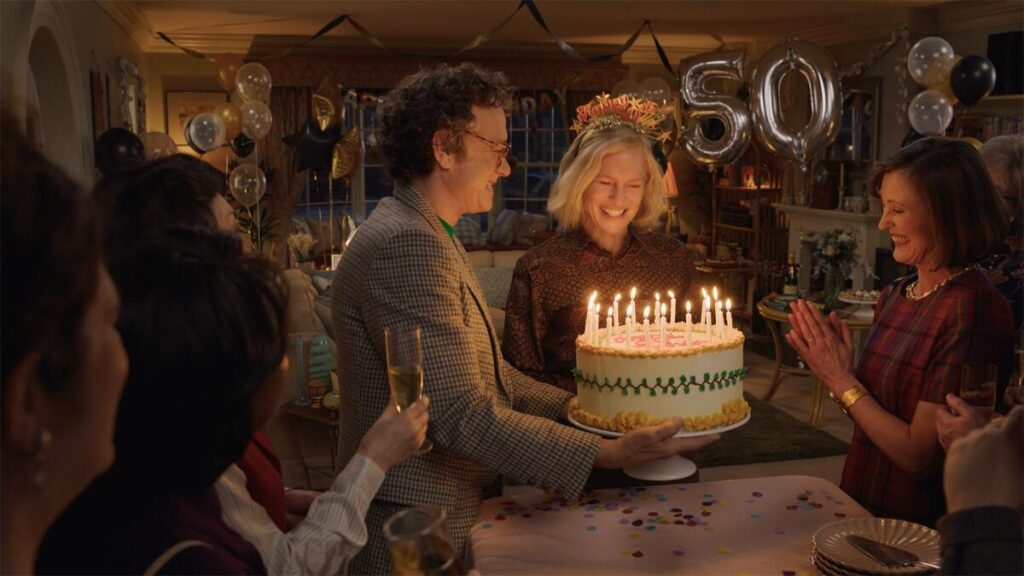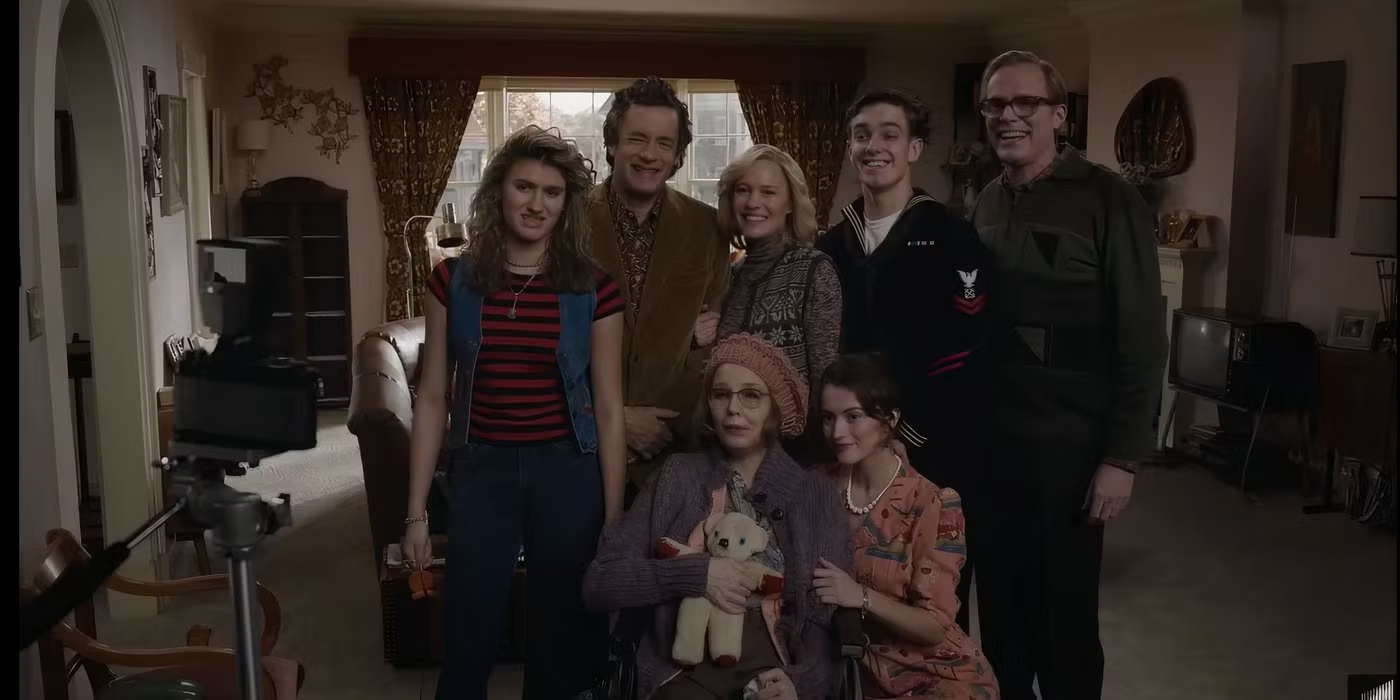
The animating force behind Robert Zemeckis’ work has long been nostalgia. Whether he’s making handsome period thrillers (the underrated Allied), refashioning childhood classics (the dreadful remakes of The Witches and Pinocchio), or interrogating his own work (the demented navel-gazing of Welcome to Marwen), the director can’t stop burrowing into the past. The legacy of Forrest Gump remains the subject of robust debate, but it is inarguably the quintessential Zemeckis picture for how it uses exquisite technique to tell a cornball story that hopscotches across the life of a boomer. Here, which reunites Gump stars Tom Hanks and Robin Wright, sports an even vaster temporal agenda: Where that 1994 Best Picture winner covered the latter half of the 20th century, this new movie seeks to encompass the entire American experiment.
The ironic conceptual hook of Here is that, while its chronology is extremely broad, its spatiality is scrupulously narrow. The whole film takes place on the exact same spit of land, with the camera never so much as budging (at least, not until the final shot). Initially—I’m speaking according to the passage of history, not the arrangement of events in the movie, whose timeline is scrambled—the location is a pastoral meadow frequented by Native Americans that subsequently becomes an entryway to the colonial estate of William Franklin, son of Benjamin. Roughly a century later, after we spy some bricklayers going about their business, the setting transforms into the living room of a single-family home, with a large triple-bay window that looks out onto the adjoining street. As the story leaps backward and forward in time, it chronicles the events of the various inhabitants of the land and house, observing their commonalities—birth and death, matrimony and separation, stout friendships and domestic fractures—while also charting their spiritual and technological differences.

This is, to put it mildly, an ambitious conceit. (I neglected, in my brief summary, to mention the dinosaurs.) And Zemeckis, as befits his reputation as a tinkerer, tackles it with cunning and professionalism. Rather than leaning into a faux single-shot gimmick, he conveys transitions between eras via superimposed rectangular panels that dissolve from one period to another, as though someone were constantly completing a series of elegant jigsaw puzzles. The effect is simultaneously minimalist and bold, and it draws you in to the movie without indulging in the gee-whiz showmanship that characterized Zemeckis’ motion-capture laboratory trials of the aughts.
Theoretically, the main character of Here is the house itself and the country it lies in, rather than any of its particular occupants, whose diverse demography and era-specific experiences are designed to contribute equally to the film’s comprehensive mosaic of American life. But come on. Did you not hear me when I said the movie reteams the primary pairing of Forrest Gump? Despite providing some token segments from the very distant and very recent past—a Lenape couple expressing their affection, a pair of Black parents giving “the talk” to their son about how to navigate encounters with police—the picture’s prime real estate belongs to the Young family. The progenitors are Rose (Kelly Reilly) and Al (Paul Bettany), a post-war couple who capitalize on the G.I. bill and plunk down a deposit in 1945. They have three children, but the only one of consequence is Ricky (Hanks), who later goes by Richard and who one day brings home a swell gal named Margaret (Wright).

While the other episodes of Here only span a handful of years at most—they include an aspiring aviator (Gwilym Lee) and his fretful wife (an underserved Michelle Dockery), then later a playful inventor (David Fynn) who delights his spouse (Ophelia Lovibond) when he devises a recliner dubbed “Relaxy-Boy”—we follow Richard and Margaret for roughly five decades. (In a sense, the film operates as the inverse of Cloud Atlas, which sprawled across continents as well as eons while assigning its central cast, including Hanks, a half-dozen roles apiece.) This requires Zemeckis to apply de-aging technology, which is eerie in that it’s both uncanny and largely effective. It’s also indicative of a movie that’s more invested in how its characters look and where (and when!) they are than in what they say or do.
The premise of Here is engaging but also somewhat self-defeating. Because it pinballs across so many different groups of people, its storytelling is necessarily diffuse, rendering most of its figures two-dimensional. (Zemeckis co-wrote the screenplay with Gump scribe Eric Roth, adapting Richard McGuire’s graphic novel.) It is admittedly impressive how the movie crams its 104 minutes with so many signifiers of American existence: Ed Sullivan and ’80s exercise videos, revolutionary warfare and Vietnam unrest, Spanish flu and COVID-19. (Less impressive: a groaning moment in which the gruff Franklin scoffs that nobody will remember his father’s name, followed by a dissolve to Richard and his brother costumed as, you guessed it, Ben Franklin.) But the picture’s tour-guide approach to national history necessarily prioritizes breadth over depth.

More of an issue: Are Richard and Margaret all that interesting? They possess a few markers of individuality; Richard sacrificed his dreams of becoming a painter to take a dull but steady job as an insurance salesman, while Margaret craves her own space, so much so that she begins to regard their beloved living-room couch as more of a prison cot. But it’s hard to escape the sense that Zemeckis intends them to represent Normal People living a Normal Life—they’re just like your parents, or you!—which flattens them into ciphers. Hanks and Wright are both wonderful actors, but there’s only so much they can do when playing such rigorous types.
To their credit, Zemeckis and Roth try to avoid replicating the emotional directness that defined Forrest Gump (some would call it tenderness, others treacle), instead conceiving of Richard and Margaret’s marriage as strained and even unhappy. But the result is a second act (take that, Fitzgerald!) that’s less complex than merely unpleasant, with a competing dourness and mushiness that can’t be reconciled. (Paradoxically, the film’s most satisfying interludes involve the inventor and his wife, in part because they don’t seem to have any problems.)
And yet, even if Here doesn’t really work as human drama, it is consistently intriguing, both for its technical bravado and for how its director is mounting a serious effort to analyze the classical notion of the American dream. The movie’s combination of strenuous technique and heart-tugging melodrama may be visibly engineered, but that very artificiality is also distinctly personal. In the cinema of Robert Zemeckis, earnest is as earnest does.
Grade: B-
Jeremy Beck is the editor-in-chief of MovieManifesto. He watches more movies and television than he probably should.
